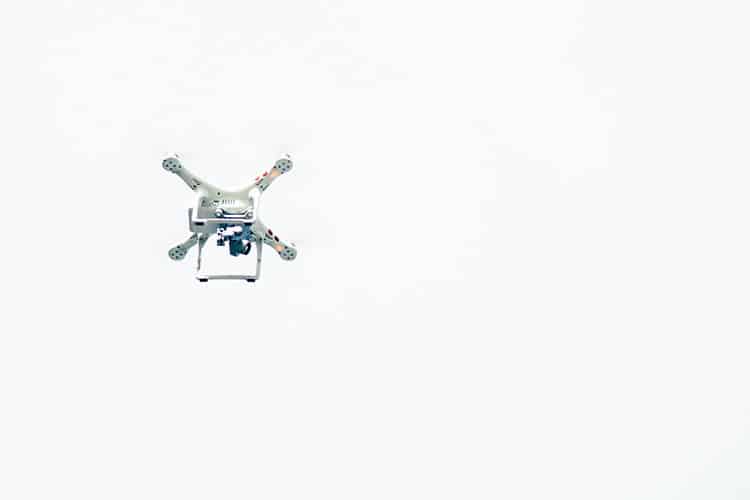How Do I Report Pilots Operating Commercially without a Remote Pilot Certificate? Your Top Questions Answered from Our FAA Survey
BY Zacc Dukowitz
30 March 2018In a survey we built a little while ago for the FAA, we had several questions come up from respondents, and we wanted to take the time to answer the most common ones.
What follows are answers to your top questions taken from within the survey.
Hat tip to Peter Acevedo, an Inspector/Program Manager in the Unmanned Aircraft Systems department at the FAA, for helping us out with both the survey and these responses.
1. What exactly are the rules for flying drones in the U.S.? I don’t really know.
It depends if you’re flying recreationally or commercially.
If you’re flying recreationally, i.e., strictly for fun or recreational purposes, you must:
- Fly for hobby or recreation ONLY (no side jobs or in-kind work allowed)
- Register your model aircraft with the FAA on the FAADroneZone website
- Fly within visual line-of-sight
- Follow community-based safety guidelines and fly within the programming of a nationwide community-based organization (CBO) like the AMA
- Fly a drone under 55 lbs. unless certified by a community-based organization
- Never fly near other aircraft
- Notify the airport and air traffic control tower prior to flying within 5 miles of an airport
- Never fly near emergency response efforts
So those are the hobbyists / recreational rules. If you’re flying for business or work purposes, your operations fall under the FAA’s Part 107 small UAS rules, and you must:
- Be at least 16 years old
- Pass an Aeronautical Knowledge Test—also known as the Part 107 test—at an FAA-approved knowledge testing center
- Undergo Transportation Safety Administration (TSA) security screening
Once a commercial drone pilot has passed the Part 107 test and received his or her Remote Pilot Certificate, they are restricted in their operations in the following ways:
- Their unmanned aircraft must weigh less than 55 pounds, including payload, at takeoff
- They must fly in Class G airspace*
- They must keep the unmanned aircraft within visual line-of-sight*
- They must fly at or below 400 feet*
- They must fly during daylight or civil twilight*
- They must fly at or under 100 mph*
- They must yield right of way to manned aircraft*
- They cannot fly directly over people*
- They cannot fly from a moving vehicle, unless in a sparsely populated area*
*Excluding the weight requirement and the requirement to fly in Class G airspace, the above restrictions can be waived if you submit and receive a Part 107 waiver from the FAA.
The Class G airspace requirement can also be bypassed, if you apply for and receive approval for special airspace authorization from the FAA.
2. How can I fly in controlled airspace as a commercial drone pilot?
To get permission to fly in controlled airspace, you have to apply for and receive airspace authorization from the FAA. The wait period could be up to 90 days, according to the FAA’s website.
This free guide will walk you through the application process.
On the other hand, if you’re trying to fly in controlled airspace where instant airspace authorizations have been made possible through LAANC (Low Altitude Authorization and Notification Capability), you can use an app to get authorization immediately.
This special capability is currently only available at a handful of airports—you can see the full, current list of places where instant airspace authorizations are available here.
3. How can I fly within five miles of an airport as a hobbyist drone pilot?
As a hobbyist, the FAA’s guidelines read that you must “Provide prior notification to the airport and air traffic control tower, if one is present, when flying within 5 miles of an airport.”
We know of two ways you can contact the airport and the air traffic control tower (yes, these are two separate places you need to contact).
One, you can call them. Or two, you can use an app like AirMap to notify the airport digitally.
If you do decide to use an app instead of making a phone call, we recommend that you do your homework and confirm that the app is notifying both the airport and the tower—the information we’ve found indicates that the AirMap app notifies the airport manager, but it’s unclear whether the requirement to notify the tower is covered through that notification.
On the other hand, if you decide to call, this page on the Aircraft Owners and Pilots Association website will allow you to search for the phone number of any airport in the U.S.:
If you’re calling, make sure to remember that you also need to call the air traffic control tower. Air traffic control tower phone numbers aren’t usually available to the public, so you’ll probably need to contact the airport manager and ask, 1) If there is a control tower, and 2) What the phone number is.

Image source
4. It’s been more than 90 days since I submitted my airspace authorization request and I haven’t heard anything from the FAA. Is there anything else I can do to push things forward?
Unfortunately there isn’t currently anything you can do to expedite your application. You can, however, politely follow up with the FAA to inquire about the status of your application.
5. I’ve lost work due to delays with airspace authorizations. Is there anything being done to fast-track the approval process?
Yes! The FAA recently announced a timeline to roll out instant airspace authorizations throughout the U.S. over the next year.
Although this doesn’t immediately help drone pilots who are seeking authorization to fly in controlled airspace, it does mean that something is being done to help.
The way instant airspace authorizations work is through LAANC, the Low Altitude Authorization and Notification Capability. LAANC uses data from UAS Facility Maps to instantly determine if the controlled airspace in which a drone pilot is requesting to fly would be allowed for flights by the FAA, thus cutting out the step of having the FAA manually review and approve an airspace authorization request.
And these approvals really are virtually instant—instead of a 90 day waiting period, in airspace where LAANC has been turned on drone pilots can get authorization in about two minutes.
6. What exactly is required to get approval for a Daylight Operations Waiver (i.e. Night Waiver)?
One of the most important things to keep in mind when preparing a night waiver application is to make sure you address all five of the FAA’s safety guidelines for night waiver applicants.
These five guidelines should be fully addressed within the Waiver safety explanation portion of your form submission.
For step-by-step guidance on how to apply for a night waiver, as well as an example of a successful submission for the Waiver safety explanation portion of the form, check out our free guide on getting a night waiver.
This advice also applies generally for all Part 107 waiver applications—the more detailed you can be when outlining how your proposed mission will plan for and address any possible safety concerns, the greater the chances that your application will be approved.
7. How can I report the activities of non-licensed drone pilots doing commercial work, and/or reckless flying?
Here is what the FAA says about reporting reckless flying:
Flying a drone in a reckless manner is a violation of Federal law and FAA regulations and could result in civil fines or criminal action. If you see something that could endanger other aircraft or people on the ground, call local law enforcement.
So, the first thing you should do if you see reckless flying, like flying over people or beyond visual line of sight in a way that could endanger people on the ground, is call the police.
After that, it’s not a bad idea to contact your local FSDO, or Flight Standards District Office, to make them aware of the incident. To help you find the FSDO in your area, here is a list of all the FSDO offices in the U.S.
You can also contact your local FSDO to report drone pilots operating commercially without a Remote Pilot Certificate.
In addition, you should contact the FAA directly to report pilots who operating without the proper certification: uashelp@faa.gov / 844-FLY-MY-UA.
8. What is being done to incorporate drones into the national airspace?
In addition to the instant airspace authorizations we’ve already covered in this post, the FAA has been working in partnership with NASA to develop UTM, or Unmanned Traffic Management. UTM refers to systems created to manage UAS, and to help them integrate with the national airspace in a safe manner.
One of the simplest ways to look at UTM is that it’s a system designed to keep drones and other types of aircraft from colliding.
Imagine a delivery drone is flying a pre-programmed route, and its path happens to cross that of a helicopter medevaccing someone out of an area.
With a functioning Unmanned Traffic Management system in place, the drone and the helicopter could communicate automatically and avoid a collision.
Alternately, a drone delivery corridor could be pre-established, and the helicopter would know to avoid that corridor, again using information shared via UTM.




